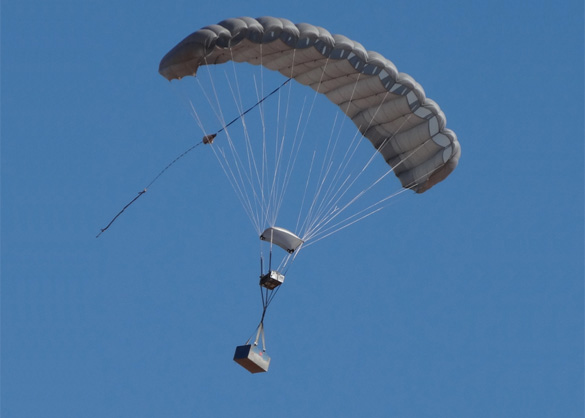Guided Parafoil High Altitude Research II
PI: Garrett (Storm) Dunker, Airborne Systems North America of CA Inc.
PI: Garrett (Storm) Dunker, Airborne Systems North America of CA Inc.

- TA09 Entry, Descent and Landing Systems
- TA13 Ground and Launch Systems Processing
This objective will be realized through development testing of a 100 kg test bed which includes two helium balloon flights to 60,000 ft MSL, and a third to possibly 100,000 ft or higher. On these flights, a parafoil designed specifically for high altitude flight will be flown using the legacy GPHAR I guidance unit, proving the redesigned parafoil's docile and controllable performance characteristics.
The first flight will provide control characterization information over the parachute. The second flight will demonstrate control over the parachute using flight software GN&C. The third and final flight will demonstrate an fully autonomous altitude management, selection of landing point, and precision landing flight profile. On successful completion of the 3rd flight, the precision delivery technology from high altitude will advance to TRL 6.
The significance of that achievement, when realized, is that this technology will create a new lower cost option for balloon payload recovery, open new recovery possibilities for space applications, and expand significantly the mid-air retrieval applications by enabling helicopter intercept at higher altitudes, with more attempts at intercepting, and reduced flight range required by the helicopter.
Technology Details
-
Selection DateREDDI-F1-16B (Jan 2017)
-
Program StatusActive
- 2 Balloon
Development Team
-
PIGarrett (Storm) Dunker
-
Organization
-
SponsorAirborne Systems

